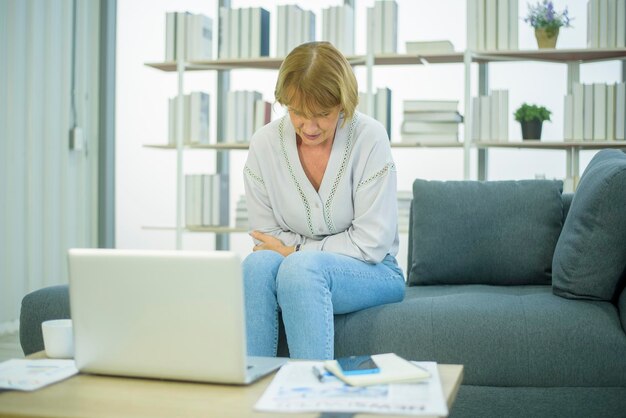Understanding and Managing Incontinence: Practical Steps to Take Control
Experiencing incontinence can feel overwhelming, but understanding the nuances and potential management strategies can redefine your relationship with it. Incontinence affects millions worldwide, yet it’s often shrouded in secrecy due to embarrassment or shame. However, with greater awareness comes empowerment. This comprehensive guide delves into various facets of incontinence, providing practical insights that can help you regain control and improve your quality of life.
What is Incontinence?
Incontinence is the involuntary loss of urine or feces, stemming from the inability to control the bladder or bowel. It is crucial to note that it is a symptom, not a disease, and it can result from various conditions affecting the urinary or gastrointestinal systems. To help manage incontinence effectively, understanding its types and causes is the first step.
Types of Incontinence
- Stress Incontinence: Leakage occurs when there's pressure on the bladder from activities like coughing, sneezing, or exercising.
- Urge Incontinence: Characterized by a sudden, intense urge to urinate followed by involuntary loss of urine.
- Overflow Incontinence: The bladder doesn’t empty completely, leading to constant or frequent dribbling of urine.
- Functional Incontinence: Urinary or bowel accidents occur because a person cannot reach the bathroom in time, often due to mobility issues.
- Mixed Incontinence: A combination of two or more types of incontinence, commonly stress and urge incontinence.
Common Causes of Incontinence
Understanding the underlying cause of your incontinence can pave the way for effective management. Factors contributing to incontinence include:
- Age: Loss of muscle mass and weakening of the pelvic floor.
- Gender: Women are more affected due to pregnancy, childbirth, and menopause.
- Medical Conditions: Diabetes, neurological disorders, and urinary tract infections.
- Lifestyle Factors: Obesity, smoking, and excessive caffeine or alcohol consumption.
Lifestyle Modifications to Alleviate Incontinence
Adaptations in daily habits can significantly impact incontinence management. Here are some practical lifestyle modifications:
Diet and Nutrition
- Stay Hydrated: Adequate fluid intake is essential; however, monitor to prevent overloading the bladder.
- Limit Bladder Irritants: Reduce consumption of caffeine, alcohol, and spicy foods as they can exacerbate symptoms.
- Maintain a Healthy Weight: Shedding excess weight can reduce pressure on the bladder and pelvic muscles.
Exercise and Physical Activity
- Pelvic Floor Exercises (Kegel Exercises): Strengthening the pelvic floor muscles can improve bladder control. Consistency is key—aim for several sets of exercises daily.
- Regular Physical Activity: Activities like walking or swimming enhance overall fitness without putting undue stress on the bladder.
Behavioral and Physical Therapies
Nonsurgical treatments can complement lifestyle changes and provide significant relief.
Bladder Training
Bladder training involves gradually increasing the intervals between bathroom visits to stretch the bladder. Start by setting a schedule and sticking to it, even if you don't feel the urge to urinate. Over time, increase the time between trips to the bathroom.
Biofeedback
Biofeedback is a technique that helps make you aware of body functions you can control. By using sensors, it can help you learn how to strengthen your pelvic muscles.
Physical Therapy
Working with a physical therapist, especially one who specializes in pelvic floor disorders, can provide personalized exercises and techniques to enhance bladder control.
Incontinence Products and Aids
Incontinence products can make a significant difference in daily life by providing discreet protection and confidence.
Absorbent Products
- Pads and Liners: Designed specifically for urine absorption, offering varying levels of protection.
- Adult Diapers: Suitable for more severe incontinence.
- Protective Undergarments: A combination of comfort and security, resembling regular underwear.
Other Aids
- Catheters: In some cases, intermittent or indwelling catheters can help manage urine output.
- Urethral Inserts and Pessaries: Devices that help prevent leakage in women experiencing stress incontinence.
Emerging Treatments and Innovations
Continuous research and innovation offer promising advancements in incontinence treatment.
Medications
Certain medications can relax bladder muscles, treat infections, or address hormonal imbalances that exacerbate incontinence. Always consult healthcare providers about any new medication.
Surgical Options
When other treatments aren’t effective, surgical options can offer relief. These include bladder sling procedures, bladder neck suspension, and artificial urinary sphincters.
Neuromodulation
Devices like the sacral nerve stimulator influence nerve signals to improve bladder control.
Mental and Emotional Well-being
Incontinence isn’t just a physical condition. It can also affect psychological well-being. Addressing the emotional component of incontinence is essential:
- Stay Informed: Knowledge reduces anxiety and empowers decision-making.
- Seek Support: Connect with support groups or mental health professionals to diminish feelings of isolation.
- Coping Strategies: Mindfulness, meditation, and stress-reduction techniques can alleviate anxiety associated with incontinence episodes.
📝 Quick Recap & Tips to Manage Incontinence:
- Identify the Type: Understanding your incontinence type guides management strategies.
- Lifestyle Changes: 🌿 Adopt pelvic floor exercises, maintain a healthy weight, and adjust your diet.
- Explore Therapies: Consider bladder training and biofeedback.
- Utilize Products: Choose protective products that fit your lifestyle and needs.
- Stay Informed: 💡 Keep up with emerging treatments and innovations.
- Mental Wellness: Prioritize emotional health, and reach out for support as needed.
By tackling incontinence from multiple angles—lifestyle, therapy, products, and mental health—you can significantly improve your daily experience and overall well-being. Always consult healthcare professionals for personalized advice and solutions.

Related Articles
- Are Incontinence Supplies Tax Deductible
- Can a Bladder Infection Cause Urinary Incontinence
- Can a Kidney Stone Cause Incontinence
- Can a Urinary Tract Infection Cause Incontinence
- Can a Uti Cause Incontinence
- Can Constipation Cause Incontinence
- Can Dairy Cause Incontinence
- Can Hemorrhoids Cause Bowel Incontinence
- Can Hemorrhoids Cause Incontinence
- Can Incontinence Be Cured